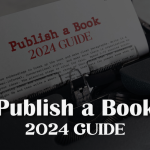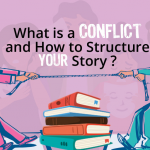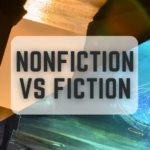The climax is sometimes viewed as the most dramatic and thrilling scene in a novel. Whether you’re watching a spectacular movie or reading a fascinating novel, you’ve been waiting for this scene – the pivotal moment when everything changes. But what exactly is the climax, and why is it so vital for a story?
You may also like: Top 10 Best Leadership Books in Literature to Inspire Your Journey
What is the Climax of a Story?
The climax of a story is the point of highest tension and conflict. It’s the point at when the protagonist faces the fundamental issue head on, and the story’s outcome lies in the balance. Essentially, it’s the most thrilling or dramatic moment of the story, where everything that has been building up culminates.
In traditional storytelling, the climax is usually near the end of the story. It follows the increasing action and comes before the resolution. Consider it the story’s emotional climax, the point at which all of the narrative threads come together.
The Role of the Climax in a Story
The climax is important in narrative because it rewards the audience’s investment. After spending time with the characters and following the plot’s twists and turns, the audience anticipates a satisfactory resolution to the core problem.
This is what the climax brings. The moment of truth can elicit intense emotions ranging from elation and relief to shock and despair, depending on the plot’s trajectory.
You may also read: Character development in fiction: A Step-by-Step Guide for Beginners
Elements of a Strong Climax
Crafting a strong climax is no easy task, but several key elements can help ensure its effectiveness:
Tension and Conflict: Tension and conflict are essential ingredients in a powerful conclusion, as they propel the plot to its pinnacle. Tension is created by a sequence of challenges or hurdles that the protagonist experiences, whereas conflict, whether internal or external, motivates the character’s actions and choices.
As the climax approaches, these forces collide, resulting in a resolution or significant shift in the narrative. Without suspense and conflict, the climax lacks force and emotional weight, leaving readers disappointed.
Resolution of Central Conflict: A powerful climax must include the resolution of the core conflict. The climax occurs when the primary conflict reaches its peak and the protagonists face their biggest difficulty.
Here, the conclusion of the core conflict is determined, whether it be a triumph, defeat, or compromise. This ending provides clarity and finality, laying the groundwork for the story’s closing scenes. A well-executed resolution guarantees that the climax is satisfying and impactful for the reader.
Pacing and Buildup: A powerful climax requires careful planning in terms of both pacing and building. A story’s pacing keeps the reader interested by progressively raising the stakes and generating anticipation for the conclusion.
All the events that have led up to the climax feeling well-earned and impactful are ensured by a well-paced buildup.
Authors can craft an emotionally charged climax that pleases readers and improves the story as a whole by managing the story’s flow.
You may also read: The 14 Most Popular Types of Fiction to Write
Different Types of Climaxes
Not all climaxes are created equal. They can vary depending on the tone and direction of the story:
Positive Climax: When the protagonist emerges victorious from the story’s core conflict, a good climax takes place. A cheerful or inspiring conclusion is frequently reached via this kind of climax, in which the main character succeeds in achieving their objectives or gets past major challenges.
Such a climax gives readers a sense of optimism and fulfillment by relieving the tension that has been building throughout the story through a satisfying denouement that is in line with the character’s journey.
Negative Climax:When the plot achieves its pinnacle but the protagonist’s fate is not favorable, there is a negative climax. Rather than ending in victory, this kind of finale frequently defies audience expectations and results in tragedy or loss. It highlights the negative effects of failing or the difficult circumstances the characters must deal with.
This finale can have a profound effect on the reader despite its unfavorable result, providing emotional depth and a memorable memory.
Open-Ended Climax: The story is left open-ended at the climax, allowing readers to interpret the resolution anyway they see fit. This kind of climax leaves the conclusion open-ended rather than concluding all of the story points.
Since readers are left wondering what might happen next, it might arouse curiosity or encourage deeper thought. Stories with themes of moral ambiguity or complexity where definitive resolutions are not required often reach this kind of climax.
You may also like: Top Creative Nonfiction Books to Spark Your Imagination
Examples of Famous Climaxes in Literature
To better understand how climaxes work in storytelling, let’s look at a few famous examples:
- Romeo and Juliet by William Shakespeare: The climax occurs when Romeo kills Tybalt, leading to his banishment and setting off the tragic events that follow.
- The Great Gatsby by F. Scott Fitzgerald: The climax happens when Gatsby’s dream is shattered, culminating in a tragic turn of events that leads to his demise.
- Harry Potter and the Deathly Hallows by J.K. Rowling: The climax is the final showdown between Harry and Voldemort, where the fate of the wizarding world hangs in the balance.
You may also read: Aravind Adiga Books of All Time | BlueRoseOne
Climax in Different Genres
The type of climax a story has often depends on its genre:
Drama and Tragedy: The climax, in both drama and tragedy, is frequently the moment of transition when the protagonist encounters their greatest obstacle or failure.
Given that it typically decides the character’s fate, this scene is fraught with strong feelings and significant stakes. Tragedies frequently have a tragic finale that emphasizes themes of loss or collapse after the climax.
For example, the tragic finale of Shakespeare’s Hamlet is brought about by the climax, which takes place during the duel that decides Hamlet’s destiny.
Comedy: In comedy, the climax often centers on a humorous twist or revelation that brings the story’s various comedic threads together.
This moment is typically the peak of laughter and chaos, where misunderstandings or exaggerated situations reach their most ridiculous point.
For example, in a sitcom, the climax might involve a character’s grand, humorous mistake that resolves multiple subplots, delivering the ultimate punchline. This climax is crucial as it not only wraps up the comedic elements but also reinforces the story’s humor and satisfaction.
Mystery and Thriller: The finale of mystery and thriller novels frequently features a shocking discovery or confrontation. It’s the turning point where the protagonist confronts the antagonist or learns the truth, setting up a dramatic conclusion.
For example, in a mystery novel, the culprit’s name is revealed at the end, linking the various clues and solving the main problem. In thrillers, it usually consists of a dramatic, action-packed scene in which the protagonist faces the antagonist, frequently in a position where survival is at stake.
This critical moment is essential because it has the greatest amount of suspense and excitement, which has a direct effect on how the story ends.
Fantasy and Science Fiction: In fantasy and science fiction, the conclusion is frequently centered on a dramatic clash or pivotal revelation. In fantasy, this could be a climactic confrontation between good and evil, where the hero’s journey achieves its climax.
In science fiction, the climax could be a significant scientific breakthrough or a high-stakes conflict with alien forces. Both genres use the climax to resolve fundamental problems and raise stakes, producing a riveting and gratifying conclusion for the spectator.
You may also like: What is Sitautional irony? Definition, Examples and Tips for Writers
How to Build Up to a Strong Climax
Creating a strong climax requires careful planning. Here are some tips:
Creating Anticipation: Building anticipation is essential for a powerful climax. To accomplish this, provide hints and foreshadow events leading up to the climax.
To keep readers on edge, provide exciting moments, unresolved problems, and character dilemmas. Increase the stakes and suspense gradually, so that the climax feels natural and inevitable.
By carefully designing these moments, you ensure that when the climax happens, it has the emotional impact and fulfillment that readers anticipate.
Character Development: Strong character development is essential for building to a strong conclusion. As your characters develop and confront problems, their actions and decisions should naturally lead to the story’s high point.
Develop their characters, objectives, and conflicts so that when they face their biggest hurdle, it feels both unavoidable and significant.
This buildup results in a gratifying finale in which the characters’ progress and tribulations come together in a meaningful and dramatic way, increasing the overall effect of the story.
Rising Action and Stakes: Focus on increasing action and stakes to build to a powerful climax. Rising action refers to a sequence of events that build suspense and lead up to the climax.
Increasing the stakes what your characters face helps to create a gripping buildup. As the dispute escalates and the consequences worsen, the climax becomes more powerful. By properly boosting the stakes and developing the growing action, you set readers up for a thrilling climax.
You may also like: 5 Affordable Tools for Easy Book Formatting and Design
Common Mistakes Writers Make with Climaxes
Even seasoned writers can fall into common pitfalls when writing climaxes. Here are a few to avoid:
Anticlimactic Resolutions: Crafting anticlimactic conclusions is a common climax-related mistake that writers make. This occurs when the story’s conclusion fails to provide the expected amount of suspense or excitement.
Instead of offering a gratifying peak, the resolution may appear rushed or disappointing, leaving readers disillusioned. A successful climax should build to a critical moment when the main conflict reaches its peak and is resolved in a meaningful manner. Avoiding anticlimactic resolutions guarantees that the climax is meaningful and engaging.
Rushed Climaxes: One common mistake that writers make with climaxes is to rush them. A hasty climax can leave readers dissatisfied and confused. When the climax arrives too rapidly, it frequently fails to provide the emotional impact or resolve required.
To avoid this, create tension by allowing your characters’ choices and actions to naturally lead to the climax. Give your climax ample space to unfold, so that it seems earned and impactful, not rushed.
Overly Predictable Climaxes: One typical mistake writers make when writing climaxes is generating overly predictable scenes. A climax should startle and captivate readers; nevertheless, if it is overly foreseeable, the story may feel hollow. For example, if the hero’s victory is clear from the outset, readers may lose interest.
Instead, try for a climax that defies expectations and provides a unique twist. This unpredictability keeps readers engaged and increases the impact of the story’s resolution.
You may also read: Foreword vs Preface: Know the Difference
Tips for Writing an Effective Climax
Focus on Character Motivation: Character motivation is critical during the climax of a story. This moment should illustrate why characters are motivated to act the way they do, making their choices feel natural and authentic.
When characters are driven by their deepest desires, anxieties, or conflicts, the climax is more dramatic and fascinating. To achieve a captivating and unforgettable climax, ensure that their behaviors at this vital juncture are consistent with their set aims and feelings.
Emphasize the Stakes: When writing the conclusion of a story, it is critical to emphasize the stakes. The climax is where the primary conflict peaks, and the outcome should be important and conclusive.
Increase the tension by revealing what is at stake for the characters whether it is their safety, happiness, or aspirations.
By vividly demonstrating the implications of success or failure, you can build a riveting finale that keeps readers emotionally invested in the story’s outcome.
Use Pacing to Control Tension: Pacing can help you produce an effective climax by controlling the tension. Slow down the pace before the climax by including descriptive details or inner conversation to heighten suspense.
Then, as the climax approaches, pick up the pace with short phrases and rapid occurrences. This contrast highlights the climax and provides a pleasant effect.
Balancing tempo and suspense is essential for engaging readers and making the conclusion seem powerful and unforgettable.
Make Sure the Climax is Satisfying: A great climax connects crucial plot themes and provides readers a sense of closure. To do this, ensure that the climax resolves the story’s core conflict, allowing characters to grow or change.
The conclusion should feel deserved, with a sufficient buildup throughout the plot. Avoid introducing new aspects at the last minute because it may feel forced. A well-written finale leaves readers emotionally satisfied, making the story’s journey worthwhile.
You may also read: What is External Conflict? Definition, Examples and Writing Tips
The Climax in Short Stories vs. Novels
Short stories and novels approach climaxes differently:
- Shorter Build-Up in Short Stories: Due to the limited word count, short stories have a faster buildup and a more immediate climax.
- Long-Form Narrative in Novels: Novels have the space to develop characters and conflicts in greater depth, allowing for a more complex and satisfying climax.
Can a Story Have More Than One Climax?
Yes! Some stories, especially epic narratives, have multiple climaxes. These often occur in stories with multiple plotlines or complex character arcs.
You may also like: List of Top 10 Famous William Faulkner Books of All Time
Climax vs. Other Story Elements
Climax vs. Rising Action: The climax and increasing action are important elements of a story’s plot, but they serve distinct functions. The growing action creates suspense by introducing conflicts and obstacles that lead to the climax.
This mounting tension propels characters to the story’s most intense point—the climax. The climax is the point at which the story’s primary conflict peaks and begins to resolve. In contrast, the growing action sets the scene for this critical moment.
Climax vs. Resolution: The climax is the most dramatic and emotionally charged moment in the story, when the primary conflict reaches its pinnacle.
It frequently determines the fate of the protagonist. In contrast, the resolution follows the climax and ties up loose ends, bringing the story to a close.
While the climax focusses on tackling the problem head on, the resolution demonstrates how the characters go afterward. Both are essential for a good plot arc, but they serve distinct functions.
Conclusion
The climax is the heart of any story, providing the emotional and narrative payoff that readers crave. By carefully building tension, focusing on character development, and raising the stakes, you can create a climax that leaves a lasting impact on your audience.
The climax is sometimes viewed as the most dramatic and thrilling scene in a novel. Whether you’re watching a spectacular movie or reading a fascinating novel, you’ve been waiting for this scene – the pivotal moment when everything changes. But what exactly is the climax, and why is it so vital for a story?
You may also like: Top 10 Best Leadership Books in Literature to Inspire Your Journey
What is the Climax of a Story?
The climax of a story is the point of highest tension and conflict. It’s the point at when the protagonist faces the fundamental issue head on, and the story’s outcome lies in the balance. Essentially, it’s the most thrilling or dramatic moment of the story, where everything that has been building up culminates.
In traditional storytelling, the climax is usually near the end of the story. It follows the increasing action and comes before the resolution. Consider it the story’s emotional climax, the point at which all of the narrative threads come together.
The Role of the Climax in a Story
The climax is important in narrative because it rewards the audience’s investment. After spending time with the characters and following the plot’s twists and turns, the audience anticipates a satisfactory resolution to the core problem.
This is what the climax brings. The moment of truth can elicit intense emotions ranging from elation and relief to shock and despair, depending on the plot’s trajectory.
You may also read: Character development in fiction: A Step-by-Step Guide for Beginners
Elements of a Strong Climax
Crafting a strong climax is no easy task, but several key elements can help ensure its effectiveness:
Tension and Conflict: Tension and conflict are essential ingredients in a powerful conclusion, as they propel the plot to its pinnacle. Tension is created by a sequence of challenges or hurdles that the protagonist experiences, whereas conflict, whether internal or external, motivates the character’s actions and choices.
As the climax approaches, these forces collide, resulting in a resolution or significant shift in the narrative. Without suspense and conflict, the climax lacks force and emotional weight, leaving readers disappointed.
Resolution of Central Conflict: A powerful climax must include the resolution of the core conflict. The climax occurs when the primary conflict reaches its peak and the protagonists face their biggest difficulty.
Here, the conclusion of the core conflict is determined, whether it be a triumph, defeat, or compromise. This ending provides clarity and finality, laying the groundwork for the story’s closing scenes. A well-executed resolution guarantees that the climax is satisfying and impactful for the reader.
Pacing and Buildup: A powerful climax requires careful planning in terms of both pacing and building. A story’s pacing keeps the reader interested by progressively raising the stakes and generating anticipation for the conclusion.
All the events that have led up to the climax feeling well-earned and impactful are ensured by a well-paced buildup.
Authors can craft an emotionally charged climax that pleases readers and improves the story as a whole by managing the story’s flow.
You may also read: The 14 Most Popular Types of Fiction to Write
Different Types of Climaxes
Not all climaxes are created equal. They can vary depending on the tone and direction of the story:
Positive Climax: When the protagonist emerges victorious from the story’s core conflict, a good climax takes place. A cheerful or inspiring conclusion is frequently reached via this kind of climax, in which the main character succeeds in achieving their objectives or gets past major challenges.
Such a climax gives readers a sense of optimism and fulfillment by relieving the tension that has been building throughout the story through a satisfying denouement that is in line with the character’s journey.
Negative Climax:When the plot achieves its pinnacle but the protagonist’s fate is not favorable, there is a negative climax. Rather than ending in victory, this kind of finale frequently defies audience expectations and results in tragedy or loss. It highlights the negative effects of failing or the difficult circumstances the characters must deal with.
This finale can have a profound effect on the reader despite its unfavorable result, providing emotional depth and a memorable memory.
Open-Ended Climax: The story is left open-ended at the climax, allowing readers to interpret the resolution anyway they see fit. This kind of climax leaves the conclusion open-ended rather than concluding all of the story points.
Since readers are left wondering what might happen next, it might arouse curiosity or encourage deeper thought. Stories with themes of moral ambiguity or complexity where definitive resolutions are not required often reach this kind of climax.
You may also like: Top Creative Nonfiction Books to Spark Your Imagination
Examples of Famous Climaxes in Literature
To better understand how climaxes work in storytelling, let’s look at a few famous examples:
- Romeo and Juliet by William Shakespeare: The climax occurs when Romeo kills Tybalt, leading to his banishment and setting off the tragic events that follow.
- The Great Gatsby by F. Scott Fitzgerald: The climax happens when Gatsby’s dream is shattered, culminating in a tragic turn of events that leads to his demise.
- Harry Potter and the Deathly Hallows by J.K. Rowling: The climax is the final showdown between Harry and Voldemort, where the fate of the wizarding world hangs in the balance.
Climax in Different Genres
The type of climax a story has often depends on its genre:
Drama and Tragedy: The climax, in both drama and tragedy, is frequently the moment of transition when the protagonist encounters their greatest obstacle or failure.
Given that it typically decides the character’s fate, this scene is fraught with strong feelings and significant stakes. Tragedies frequently have a tragic finale that emphasizes themes of loss or collapse after the climax.
For example, the tragic finale of Shakespeare’s Hamlet is brought about by the climax, which takes place during the duel that decides Hamlet’s destiny.
Comedy: In comedy, the climax often centers on a humorous twist or revelation that brings the story’s various comedic threads together.
This moment is typically the peak of laughter and chaos, where misunderstandings or exaggerated situations reach their most ridiculous point.
For example, in a sitcom, the climax might involve a character’s grand, humorous mistake that resolves multiple subplots, delivering the ultimate punchline. This climax is crucial as it not only wraps up the comedic elements but also reinforces the story’s humor and satisfaction.
Mystery and Thriller: The finale of mystery and thriller novels frequently features a shocking discovery or confrontation. It’s the turning point where the protagonist confronts the antagonist or learns the truth, setting up a dramatic conclusion.
For example, in a mystery novel, the culprit’s name is revealed at the end, linking the various clues and solving the main problem. In thrillers, it usually consists of a dramatic, action-packed scene in which the protagonist faces the antagonist, frequently in a position where survival is at stake.
This critical moment is essential because it has the greatest amount of suspense and excitement, which has a direct effect on how the story ends.
Fantasy and Science Fiction: In fantasy and science fiction, the conclusion is frequently centered on a dramatic clash or pivotal revelation. In fantasy, this could be a climactic confrontation between good and evil, where the hero’s journey achieves its climax.
In science fiction, the climax could be a significant scientific breakthrough or a high-stakes conflict with alien forces. Both genres use the climax to resolve fundamental problems and raise stakes, producing a riveting and gratifying conclusion for the spectator.
You may also like: What is Sitautional irony? Definition, Examples and Tips for Writers
How to Build Up to a Strong Climax
Creating a strong climax requires careful planning. Here are some tips:
Creating Anticipation: Building anticipation is essential for a powerful climax. To accomplish this, provide hints and foreshadow events leading up to the climax.
To keep readers on edge, provide exciting moments, unresolved problems, and character dilemmas. Increase the stakes and suspense gradually, so that the climax feels natural and inevitable.
By carefully designing these moments, you ensure that when the climax happens, it has the emotional impact and fulfillment that readers anticipate.
Character Development: Strong character development is essential for building to a strong conclusion. As your characters develop and confront problems, their actions and decisions should naturally lead to the story’s high point.
Develop their characters, objectives, and conflicts so that when they face their biggest hurdle, it feels both unavoidable and significant.
This buildup results in a gratifying finale in which the characters’ progress and tribulations come together in a meaningful and dramatic way, increasing the overall effect of the story.
Rising Action and Stakes: Focus on increasing action and stakes to build to a powerful climax. Rising action refers to a sequence of events that build suspense and lead up to the climax.
Increasing the stakes what your characters face helps to create a gripping buildup. As the dispute escalates and the consequences worsen, the climax becomes more powerful. By properly boosting the stakes and developing the growing action, you set readers up for a thrilling climax.
You may also like: 5 Affordable Tools for Easy Book Formatting and Design
Common Mistakes Writers Make with Climaxes
Even seasoned writers can fall into common pitfalls when writing climaxes. Here are a few to avoid:
Anticlimactic Resolutions: Crafting anticlimactic conclusions is a common climax-related mistake that writers make. This occurs when the story’s conclusion fails to provide the expected amount of suspense or excitement.
Instead of offering a gratifying peak, the resolution may appear rushed or disappointing, leaving readers disillusioned. A successful climax should build to a critical moment when the main conflict reaches its peak and is resolved in a meaningful manner. Avoiding anticlimactic resolutions guarantees that the climax is meaningful and engaging.
Rushed Climaxes: One common mistake that writers make with climaxes is to rush them. A hasty climax can leave readers dissatisfied and confused. When the climax arrives too rapidly, it frequently fails to provide the emotional impact or resolve required.
To avoid this, create tension by allowing your characters’ choices and actions to naturally lead to the climax. Give your climax ample space to unfold, so that it seems earned and impactful, not rushed.
Overly Predictable Climaxes: One typical mistake writers make when writing climaxes is generating overly predictable scenes. A climax should startle and captivate readers; nevertheless, if it is overly foreseeable, the story may feel hollow. For example, if the hero’s victory is clear from the outset, readers may lose interest.
Instead, try for a climax that defies expectations and provides a unique twist. This unpredictability keeps readers engaged and increases the impact of the story’s resolution.
You may also read: Foreword vs Preface: Know the Difference
Tips for Writing an Effective Climax
Focus on Character Motivation: Character motivation is critical during the climax of a story. This moment should illustrate why characters are motivated to act the way they do, making their choices feel natural and authentic.
When characters are driven by their deepest desires, anxieties, or conflicts, the climax is more dramatic and fascinating. To achieve a captivating and unforgettable climax, ensure that their behaviors at this vital juncture are consistent with their set aims and feelings.
Emphasize the Stakes: When writing the conclusion of a story, it is critical to emphasize the stakes. The climax is where the primary conflict peaks, and the outcome should be important and conclusive.
Increase the tension by revealing what is at stake for the characters whether it is their safety, happiness, or aspirations.
By vividly demonstrating the implications of success or failure, you can build a riveting finale that keeps readers emotionally invested in the story’s outcome.
Use Pacing to Control Tension: Pacing can help you produce an effective climax by controlling the tension. Slow down the pace before the climax by including descriptive details or inner conversation to heighten suspense.
Then, as the climax approaches, pick up the pace with short phrases and rapid occurrences. This contrast highlights the climax and provides a pleasant effect.
Balancing tempo and suspense is essential for engaging readers and making the conclusion seem powerful and unforgettable.
Make Sure the Climax is Satisfying: A great climax connects crucial plot themes and provides readers a sense of closure. To do this, ensure that the climax resolves the story’s core conflict, allowing characters to grow or change.
The conclusion should feel deserved, with a sufficient buildup throughout the plot. Avoid introducing new aspects at the last minute because it may feel forced. A well-written finale leaves readers emotionally satisfied, making the story’s journey worthwhile.
You may also read: What is External Conflict? Definition, Examples and Writing Tips
The Climax in Short Stories vs. Novels
Short stories and novels approach climaxes differently:
- Shorter Build-Up in Short Stories: Due to the limited word count, short stories have a faster buildup and a more immediate climax.
- Long-Form Narrative in Novels: Novels have the space to develop characters and conflicts in greater depth, allowing for a more complex and satisfying climax.
Can a Story Have More Than One Climax?
Yes! Some stories, especially epic narratives, have multiple climaxes. These often occur in stories with multiple plotlines or complex character arcs.
You may also like: Never Say Goodbye a Book By Hilary Green
Climax vs. Other Story Elements
Climax vs. Rising Action: The climax and increasing action are important elements of a story’s plot, but they serve distinct functions. The growing action creates suspense by introducing conflicts and obstacles that lead to the climax.
This mounting tension propels characters to the story’s most intense point—the climax. The climax is the point at which the story’s primary conflict peaks and begins to resolve. In contrast, the growing action sets the scene for this critical moment.
Climax vs. Resolution: The climax is the most dramatic and emotionally charged moment in the story, when the primary conflict reaches its pinnacle.
It frequently determines the fate of the protagonist. In contrast, the resolution follows the climax and ties up loose ends, bringing the story to a close.
While the climax focusses on tackling the problem head on, the resolution demonstrates how the characters go afterward. Both are essential for a good plot arc, but they serve distinct functions.
Conclusion
The climax is the heart of any story, providing the emotional and narrative payoff that readers crave. By carefully building tension, focusing on character development, and raising the stakes, you can create a climax that leaves a lasting impact on your audience.
Frequently Asked Questions
The climax is the moment of highest tension, while the resolution is the part of the story that follows and provides closure.
In most traditional narratives, the climax occurs toward the end. However, some experimental stories may feature climaxes earlier in the plot.
Yes, a climax is essential for most stories as it resolves the central conflict. Without it, the story may feel incomplete.
The length of the climax varies depending on the story, but it should be proportional to the buildup and stakes involved.
Yes, not all climaxes are grand or explosive. Some are more subtle but still provide the necessary resolution to the central conflict.
















